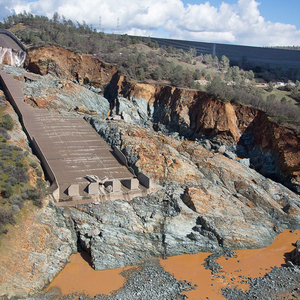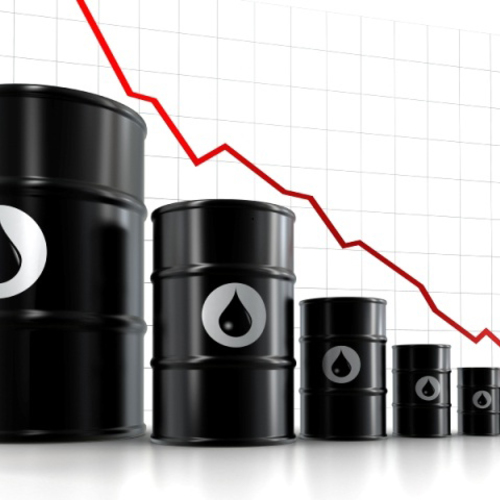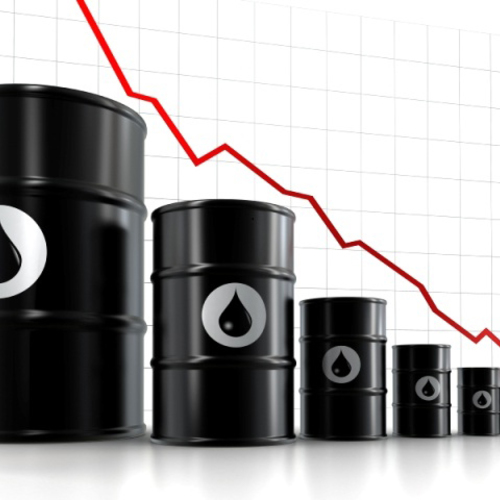Image Credit: Michael Ramirez
Image Credit: Michael Ramirez Why isn’t home building rebounding? What’s the true value of a gallon of gasoline? (Hint: a lot more than $4.) These questions and many others are addressed in Chris Martenson's must-read book
Image Credit: Wiley
Once upon a time in a village there lived a wise old man. Legend had it that he could answer any question posed to him. A village boy hatched a plan to fool him. He caught a small bird, and approaching the wise old man with the bird in his hands, he asked, “Is this bird dead or alive?” If the man said it was alive, the boy would secretly break its neck and then reveal it to be dead (or perhaps pining for the fjords). If the man said it was dead, the boy would release it alive from his hands.
To the boy’s surprise, the wise man said, “It’s in your hands. That bird’s life is in your hands.”
A book that shows just how much is in our hands
Just how many life-defining issues are in our hands right now (and just how much we are in danger of fooling ourselves) is the subject of the new book by Chris Martenson, The Crash Course: The Unsustainable Future of Our Economy, Energy and Environment (Wiley Publishers).
Martenson began serious economic research in 2002 and went from there to forecasting the bursting of the housing bubble, and the banking crisis, years before they happened — all while taking his family from a prosperous life in Mystic, Connecticut to a simpler lifestyle in rural Mass.
Not merely good at predicting financial disaster
If he were merely good at predicting financial disasters, however, his book (along with the series of free “Crash Course” videos at ChrisMartenson.com) wouldn’t qualify as a must-read. Martenson is equally good at looking at any of what he calls the “three E’s,” whose limits may define our standard of living for the next 20 years and beyond: energy, the economy, and the environment.
Plenty of analysts have noted problems with our path on any one of these matters, but Martenson puts them together in new and compelling ways. He sums up our ongoing economic troubles with three common-sense words: “Too much debt.” Why too much debt is such a problem, though, comes into focus when he looks at energy.
Debt, Martenson tells us, assumes that the future will be bigger than the present. We are happy to borrow money today and pay it back with interest tomorrow, because we will make investments to improve our prospects and our income generating potential. Or perhaps we simply hope that tomorrow will be more favorable and we’ll have money then that we don’t have now.
The trouble with the debt story
The trouble with this story, and particularly with the massive amounts of debt taken on today at personal, municipal, state, and national levels, is that while the future has gotten bigger and bigger for the last 200 years, that trend has coincided with the exploitation of a onetime treasure trove of easy fossil fuels. Without the energy to fuel more exponential growth having peaked, the means to fuel the expansion required by our debt-based money system isn’t there.
Martenson has a great way of answering questions that I didn’t know I had, in ways that transform the conversation. Writers since before E.F. Schumacher (“Small is Beautiful”) have been questioning the Western imperative to grow, grow, grow — and they have painted convincing pictures of how a world without a “growth is good” mentality could be a better place.
What sustainability has been up against
Martenson shows us what these prescriptions have been up against: our monetary systems today, untethered from any stable anchor, and loaned into existence, require exponential growth — putting these systems on a collision course with our finite planet.
We’re fortunate that Martenson not only does his research, but can also communicate about it, fitting skills for a self-styled “information scout.” Among other things, he takes the time to fully explore outcomes he considers unlikely, in the process showing us why.
For example, Martenson looks at the next 40 years, asking what energy production we will need worldwide to bring online both to enjoy continued growth in energy supplies, and to offset depletion of existing oil fields. Among other options, Martenson tells us, we would need 200 new nuclear plants per year (the U.S. currently has 104 operating reactors).
For anyone wondering when the home building or the construction sectors are “coming back like they were,” Martenson is one of a chorus out there saying that there is no going back. No more unbelievably favorable energy return on energy invested (EROEI), no more capacity to take on debt that we have a hope of paying off, no more abundance, well, really anywhere.
Global warming: A question mark?
Examples like this have the needed — but painful — effect of shattering vague optimisms. Another one–the idea that technology will save our hides on the energy front — is demolished by Martenson with three scorching facts.
Fact One: Technology does not create energy — it only finds and transforms it.
Fact Two: Transforming energy is expensive. Look at the four units of wood heat that are wasted in creating one unit of electricity at the McNeil generating station, which I wrote about here recently.
Fact Three: Energy transitions take time. “I won’t get excited about a transition to natural gas,” he says, “until I hear the U.S. president get on television and announce the equivalent of a WWII-era effort to immediately begin building out the necessary infrastructure to make it happen.
On certain points it would be a relief if a skeptic checked all of Martenson’s facts and proved him wrong. I don’t think it will happen, even if I do have quibbles: Martenson’s treatment of global warming, and its potential to transform our world, is cursory, even as he makes us painfully aware of other environmental resource constraints such as those on our farms and fisheries.
One parting Martenson gem: if you think $4-a-gallon gas is expensive, consider that if you put a single gallon in a car, drove it until the gas ran out, and then pushed it back home, it would take you 350 to 500 hours. If you paid someone $15 per hour to do this for you, that gallon of gas would be valued at around $6,000. Cheap gas lets us live like royalty.
Tristan Roberts is Editorial Director at BuildingGreen, Inc., in Brattleboro, Vermont, which publishes information on green building solutions.
Weekly Newsletter
Get building science and energy efficiency advice, plus special offers, in your inbox.
















10 Comments
living like royalty
This is a great post, and I'm very happy to see the energy-debt connection being discussed by green building professionals (I usually see this topic crop up in peak oil and environmentalist circles).
I particularly appreciate the point that "Cheap gas lets us live like royalty". It is certainly true, and I think it is a fact that is vastly underappreciated by most people when they are thinking about what the future is likely to look like. The car/gas example is a good one. Let me offer another. Consider:
The maximum useful mechanical output that a fit person can generate on a sustained basis, working as hard as they can, is about 100 watts. A world-class athlete on a bike can do better than that, but not much and not for very long.
1 kilowatt hour does not seem like very much energy to most of us. It's only worth $0.05-0.20. We each use ~10kWh per day of electricity directly, and many more (around 300) indirectly and in the form of fossil fuels.
However: 100 watts * 10 hours = 1 kWh.
In a human-scale context, each kWh represents the total useful output of a person working AS HARD AS THEY CAN for about as long as they can do so sustainably. (Or longer: 100 watts for 10 hours might or might not be physically possible; it's certainly beyond my ability, and at any rate represents daily work to the point of utter exhaustion.) We each of us have dozens, in some cases hundreds or thousands, of energy slaves laboring on our behalf each and every day.
That's why we live so good, and that's what we stand to lose in the future.
Response to Brent
Brent,
I agree. I'm an old hippie, and I used to live without any fossil-fuel gadgets or PV. I remember the days when I would grind my whole-wheat flour by hand to make biscuits for dinner. Hard work.
Follow up to Brent...
Just for fun, I looked up the average power output for some of the riders in this year's Tour de France. Here's a snapshot from the American Christian Vande Velde - 289W average over 5 hours 20 minutes on a very difficult day in the mountains. http://connect.garmin.com/activity/99936583
human power
Peak power of 857 watts.. Wow! His average sustained power is higher than I would have expected, so probably 100 watts for 10 hours is humanly possible, though maybe not for mere mortals like us. Though the actual net power output of a human is going to be less than 100 watts because you have to feed them.
Obviously the food energy input will be substantially greater (at least 3-4 times, at a guess) than the useful power output; most of that food energy (in a pre-industrial agricultural system) will be captured solar energy, but traditional agriculture still represents a net energy process with some level of non-solar input. I've read that modern industrial ag has an energy return on investment of about 10%-20% (i.e. it's massively lossy); of course pre-industrial agriculture must have had a return ratio of better than 1 but I'm not sure how much better (probably depends on what you're growing).
human-scale energy
Thinking about modern energy use in the context of human-scale energy has led me to a number of conclusions, one of which is a major motivation for preserving our current technological culture: any "advanced" civilization (i.e. having a significant number of people able to engage in artistic and scientific endeavors, as well as leisure) must either have a technological energy source (fossil or renewable) or must employ human slaves or serfs, in order to create the energy surplus required to support artists, scientists, politicians, and other who are not directly involved in energy harvesting.
I don't know of any historical counterexamples. Certainly the Greeks and Romans had slaves, and the medieval peasant wasn't a whole lot better off, but I'm not a student of history and I particularly don't know about ancient eastern civilizations in this regard.
500 hours??
I have a car that gets 40 mpg. So with one gallon of gas I can drive it 40 miles. On level ground I think I can push it at about 1 mph for a period of time. So that means I would need 40 hours (plus rest time) to get it home. That's quite a bit less than 350 to 500 hours. Part of the difference between driving a car and pushing a car is when you push a car you only have road resistance to contend with, while when driving a car you also have wind resistance.
That being said, it's a thought-provoking article.
John's link
That is really interesting data, and totally humbling. If he generates an average of 289 watts for 5.3 hours... 1.531 KwH... that effort is worth about 10 cents in the local electricity market.
Crash Course video series
Tristan, thanks for this great article. I started a thread linking to Chris Martensen's video series a while back, and would like to add a plug for that again. It's quite a few hours altogether but entirely worthwhile. In fact it's hard to imagine what else might be more valuable to do with those hours, given the importance of the subject and the quality of information.
Every day on NPR they talk about how the "economy" needs to grow more, and housing prices need to be rising faster, etc. Pundits say 1% growth would be hopelessly inadequate, a doubling interval of 70 years. So far very few people seem to understand the basic fallacy of expecting unlimited growth within the finite world.
Reinventing the U.S. economy
Great blog, Tristan.
I addressed some of these same issues in my February 2009 blog, "Reinventing the U.S. Economy".
human effort
To Jack and others who have commented on the human effort equivalent of gasoline: there is necessarily a fudge factor in calculating this, and since I lent my copy of Martenson's book to Alex Wilson (the usual author of this blog, now on sabbatical), I don't have access to the footnote in which he describes what he did.
However, various Internet sources give about 35 kwh as the amount of energy in a gallon of gasoline. A very fit person can create 100 W of power under good conditions. Thus, It would take 350 hours of steady effort for one person to expend the 35 kwh of energy in a gallon of gas. (That doesn't include OSHA-mandated breaks.)
There are a lot of factors one could bring in to make this calculation, including how much fuel the car actually uses to move forward, what happens to that 1 mph roll that Jack describes when it hits even a tiny incline... I think the calculation could change from 40 to 400 or 4,000 hours, and the point would be pretty much the same: cheap oil gives us access to slave labor that kings of the past wouldn't have dreamed of.
Log in or create an account to post a comment.
Sign up Log in